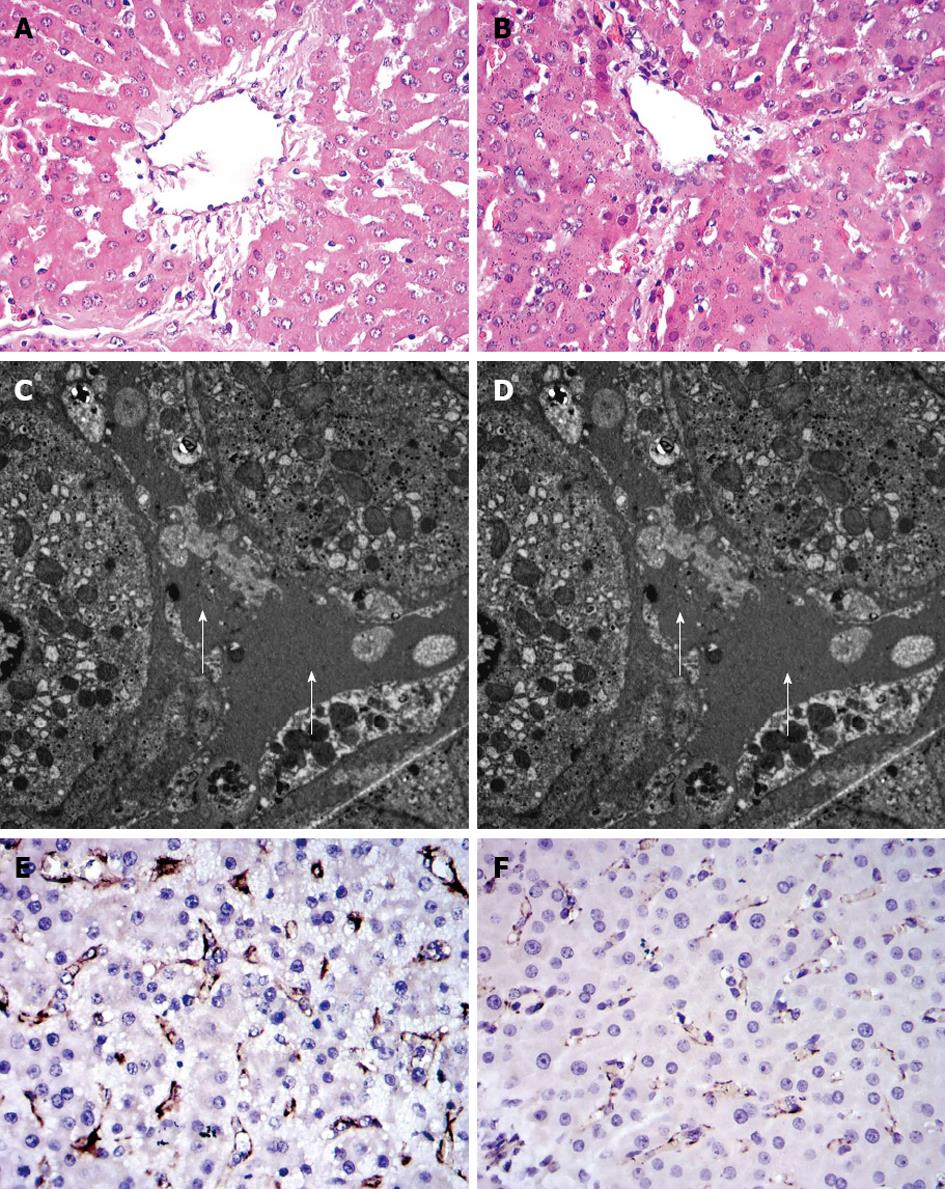Copyright
©2013 Baishideng Publishing Group Co.
World J Gastroenterol. Aug 21, 2013; 19(31): 5076-5084
Published online Aug 21, 2013. doi: 10.3748/wjg.v19.i31.5076
Published online Aug 21, 2013. doi: 10.3748/wjg.v19.i31.5076
Figure 4 The histological changes in tissue samples were taken at 1 h post-hepatectomy in the three groups.
Hematoxylin and eosin (magnification × 400); Transmission electron microscopy (magnification × 6000) and CD31 immunohistochemical staining in the three groups. In the 15% group, there was significant endothelial denudation, sinusoidal dilation, hydropic changes in hepatocytes, and hemorrhage into the perivenular connective tissue (A); the sinusoidal endothelial lining was slightly damaged and detached into the sinusoidal space, with enlargement of the Disse’s spaces (C, arrow); CD31 immunostaining also revealed destruction of the endothelial lining (E); whereas in the 15%+ S or 10%+ S group, there was no intraparenchymal hemorrhage present (B); Transmission electron microscopy demonstrated the sinusoidal endothelial cells, and the structure of the endothelial lining can also be seen (arrow) (D); CD31 immunostaining also revealed mild sinusoidal microarchitecture injury (F).
- Citation: Tu YL, Wang X, Wang DD, Zhu ZM, Tan JW. Impact of mesocaval shunt on safe minimal liver remnant: Porcine model. World J Gastroenterol 2013; 19(31): 5076-5084
- URL: https://www.wjgnet.com/1007-9327/full/v19/i31/5076.htm
- DOI: https://dx.doi.org/10.3748/wjg.v19.i31.5076









